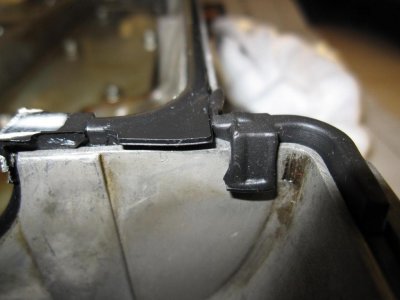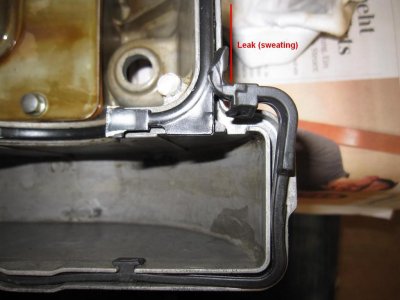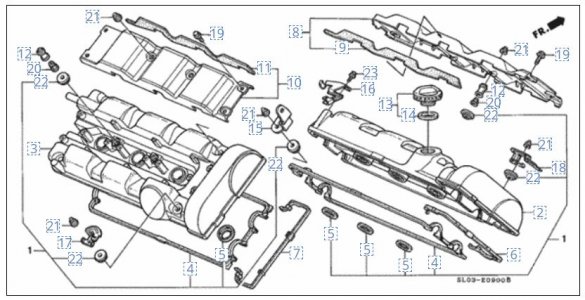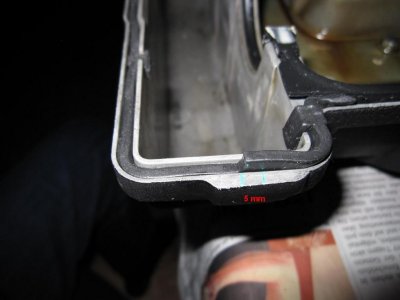Quite busy at the moment so just brief insight.
As [MENTION=12356]Mac Attack[/MENTION] mentioned, would be surprise if you managed to install it in wrong places.
Some photos with TB rear cover.
Can't deny other possible causes but example of one of the most common rear bank oil seepage mode.
Seen it on so many NSX engines….
By the way, I saw exactly the same status as your swollen/swelled gasket on several engines.
They were all at the rear valve covers.
Didn't pay much attention at that time because they were not installed properly any way (cut/trapped at other places) but interesting to see on yours as it did look like installed properly.
Effect of engine oil chemical???
Just a matter of interest, did you replace the metal/rubber washers
#22 in your parts diagram at the same time?
Also, won't directly cause the seepage but attribute for the valve cover alignment difficulty during the installation.
If your NSX is 91 model, are you using the original or later spec TB Mid covers (Front & Rear) ?
The rubber gasket
#6 &
#7 are more of dust/splash proof and not for oil seal purpose.
In fact, even without them, if the main gasket
#4 was installed properly with oil free mating surface at the cyl head, the oil seepage won't happen for several years.
With the engine inside the bay and both Eng/Gbox side mounts still connected, the engine won't drop any further so very limited working space available around the rear bank.
If you have FI setup or any aftermarket parts inside the eng bay, that will even reduce the available space further.
One of the most difficult section to create oil free surface while keeping the eng inside the bay marked in yellow.
Looks easy at first but once assembled then…..
Imagine you need to access that narrow channel between
#1 cam holder and cover plate while keeping engine inside the bay.....
Any seepage behind the TB cover plate marked in yellow (1st photo above) would drip down from the small opening marked in blue (2nd photo above) at the cyl head then lands around the oil cooler pipe/hose and then inboard joint boot of R-driveshaft.
Over the years, the small gasket at the back of the cover plate will take set and no longer creates good seal against thermal expansion/contraction and seep behind the gasket.
The oil seeped from the blue marked area (1st photo above) will run down along the cyl head and depending on the air flow, it will drip down to several different places.
If the
#1 cam holder was lifted in the past or never serviced before, the liquid gasket applied next to the brown cam seal may no longer making good seal.
However, the amount of seepage would be much lower than the one from around the yellow marked section.
Hope you can fix the seepage.
Kaz















